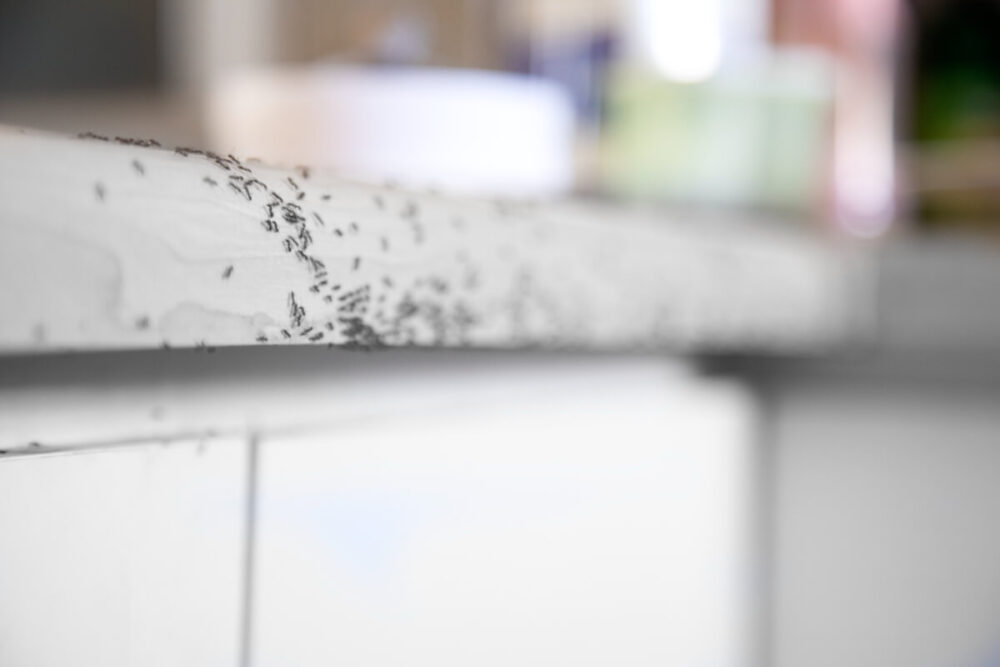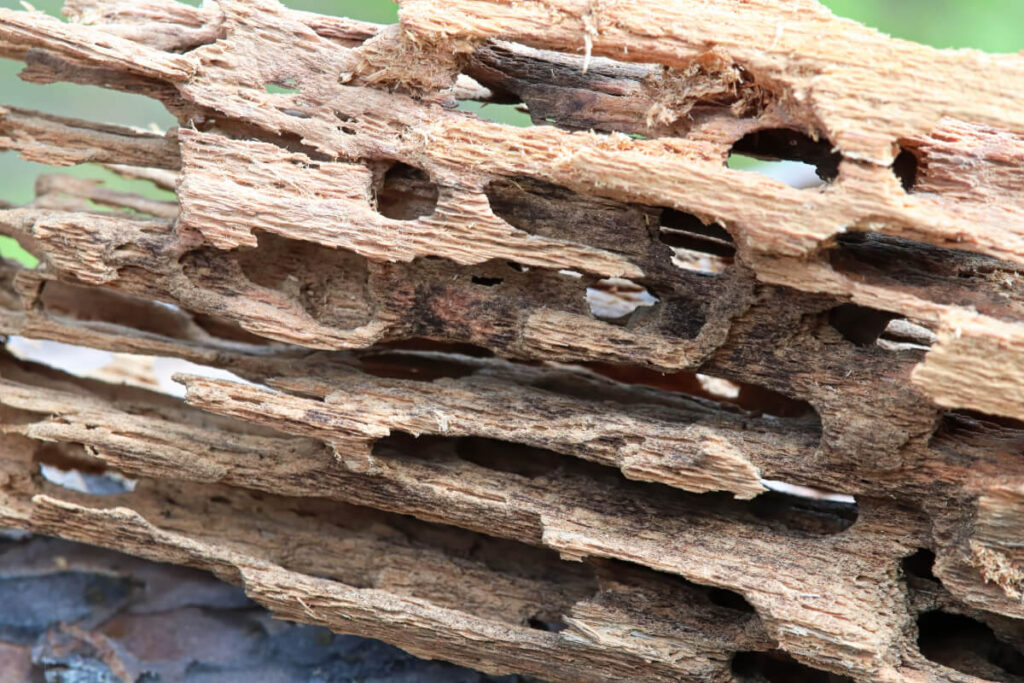
Ants are considered a nuisance when they’re found inside homes because they take crumbs of leftover food back to their colonies. However, the presence of carpenter ants is a different issue because they quietly ruin the foundation of the house once they get inside.
So why do carpenter ants enter buildings? Carpenter ants are attracted to places that provide them with everything they need to survive, such as wet wood, food, standing water, and organic debris. These pests are one of the most destructive ant species to invade homes because they dig through wooden structures and eventually weaken the structural integrity of a building.
Carpenter ants got their name because of their unique nesting habit that requires them to excavate wood and create tunnels inside it. According to a survey by the National Pest Management Association (NPMA), these pests are responsible for infesting about 66% of the treated ant infestations in different parts of the country.
But like other household pests, carpenter ants don’t just march into your home for no reason. These pests try to gain access to the property because they found something there that attracts them, such as:
Carpenter ants in homes attack wood but they don’t eat it like termites do. They only use their strong mandibles to dig through the damaged wood and create smooth tunnels inside it to create a nest for their young or pathway back to their colony. Wet or decayed wood makes their job of carving through wood a lot easier so these pests take their chances and attack the dead wood.
Check around the house for water leak or a drainage problem to avoid having wet wood inside the house. Although these pests attack rotting wood to build carpenter ant nests, they may eventually move into sound wood.
Like other kinds of pests, food is one of the main reasons why carpenter ants decide to infest a property instead of staying outdoors. These pests are opportunistic feeders that eat a wide range of food to survive, but their favorites include those that are rich in sugar or protein.
When they’re outside, carpenter ants prefer eating dead insects and plant juices like the honeydew excreted by aphids. Once their food sources outside start dwindling, these pests increase their foraging area to look for a new source. If they find that your home has food like crumbs, grease, sweets, and pet food, they start bringing other worker ants to pick the food apart and bring it back to the colony.
Water is one of the few things that carpenter ants need to survive. They scour different areas for water sources and they’ll enter your home if there are pools of water around the house. Some of the most common ways that standing water forms are broken gutter systems, leaking hoses, compacted leaf litter, compacted ground, leaking air conditioning units, and leaking water pipes.
Standing water also attracts many other types of pests like ticks and mosquitoes so it’s better to solve the moisture problem immediately. If left alone, the water might seep into the wooden structure of the house and cause it to rot.
A backyard that has tons of plants is the perfect environment for carpenter ants to thrive because they have a lot of food sources to exploit. They mostly feed on the plant-damaging pests and the honeydew left by aphids, making them a good biological control measure for some homeowners.
However, the presence of plants around the perimeter of the home only provides these ants with a way to get inside the house. If you have landscaping in the yard, it’s important to talk to a pest management professional about different ways to manage these pests and prevent them from damaging the foundation.
Another thing that attracts carpenter ants is the accumulated organic debris that lays on the ground. When the fallen leaves and sticks stay on the ground for too long, they trap the moisture in the soil beneath and attract carpenter ants.
A few ants scurrying around the kitchen might seem normal, but they might be a sign of carpenter ants building nests inside your home that should be addressed immediately and with the right pest control measures. Damages caused by a carpenter ant colony in your home builds up over time until it becomes a huge and expensive structural damage. Learn to recognize the first signs of carpenter ant infestations like:

Carpenter ants aren’t shy creatures so there’s a huge chance you’ll find a few of them as they search the area for food sources. They’re large ants that have black, red, or brown bodies with a node between the abdomen and thorax. Carpenter ants usually measure about 5/8 inches long, much larger than other species of ants.
Reproductive carpenter ants are called alates or “flying ants” because they have wings. The appearance of alates is a huge cause for concern because it means that they’re in mating season. Even if you miss seeing the actual flying ants, you might find shed wings in places like hollow space, basement walls, and window sills.
Sawdust or frass usually starts accumulating in some areas of the house if it’s infested with carpenter ants. This combination of wood shavings and carpenter ant excretions are the results of digging through the wooden walls and floors of the house. Frass is typically found in hidden places like crawl spaces and wall voids.
As the carpenter ant population grows, their rustling noises inside the walls become faintly audible. Homeowners may also notice hollow-sounding walls whenever they knock on the infested parts of the house. The wood structures may look fine on the outside, but there’s a chance that the excavation of the thousands of carpenter ants results in voids inside walls.
Eliminating carpenter ants isn’t as easy as squashing the scout ants every time they show up. An effective pest control and extermination method for these ants requires treating the problem at its root using an IPM-based approach. Here are some of the things you can do to get rid of the carpenter ants after spotting them:
Baiting the ants using sweet food like jam or jelly can help homeowners find the nest just by following the ants when they take the food back to their colony. You can also make lethal carpenter ant bait for them by mixing sugar and baking soda, placing it in a shallow dish, and leaving it out in the open. The powdered sugar attracts the worker carpenter ants while the baking soda kills them naturally.
Adult carpenter ants follow the pheromone trails created by their fellow ants to find nearby food sources and travel back and forth to their colony. Cleaning the surfaces where they pass through erases their pheromone trail and messes with their behavior, preventing them from finding their way back to the colony. Some of the most effective natural repellents for these ants include white vinegar and essential oil from orange, cedarwood, lemon, or tea trees.
After finding colonies of carpenter ants, homeowners can use boric acid to destroy the nest. This substance is lethal for most ants but it requires multiple applications to completely eliminate the nests of carpenter ants inside walls.

Carpenter ant infestations are difficult to deal with especially if you have no idea where to start and how to do it. For high-quality extermination services, it’s better to leave this kind of job at the hands of experienced pest control professionals like our pest experts at Yale Pest Control. We always make sure to perform an accurate examination of the infested homes and recommend IPM-based treatment plans to keep our clients and the environment safe.
Talk to us today to get a free quote for your property.